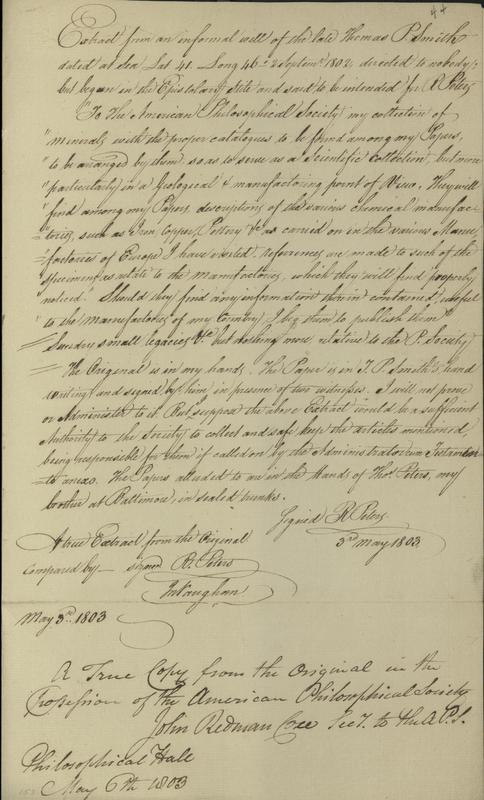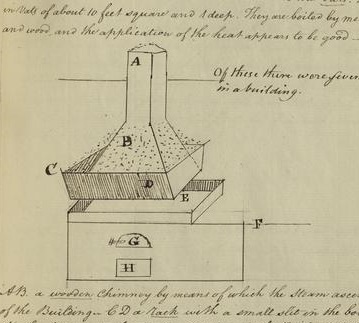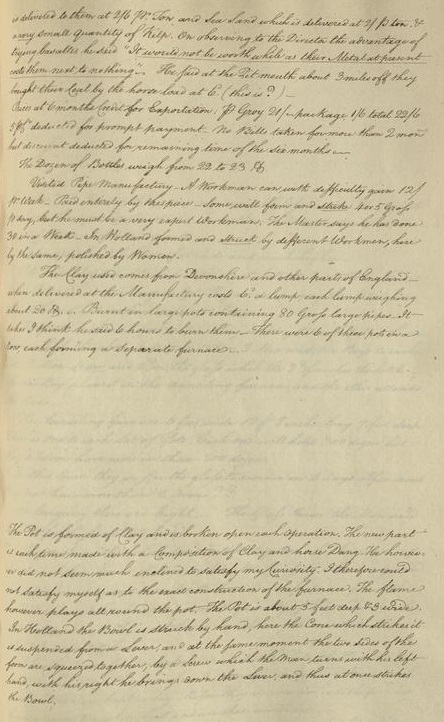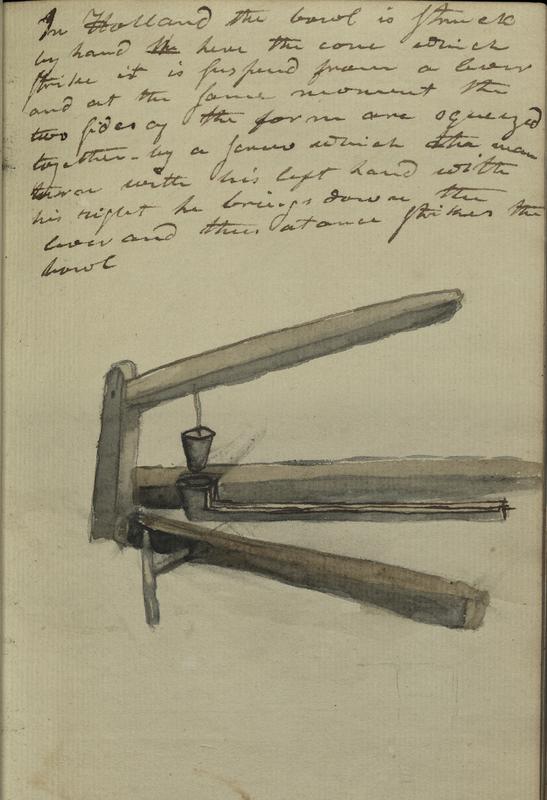Thomas Peters Smith’s Grand Scientific Tour of Europe (1800-1802)
On May 1, 1803, the members of the American Philosophical Society sent Librarian John Vaughan to Baltimore, in order to retrieve boxes of minerals bequeathed by Thomas Peters Smith to the Society. This brief entry from the Minutes of the Society seems mundane, yet, Smith’s life story is anything but dull and ends with a tragic death at sea in 1802, due to a cannon explosion on a ship travelling from Europe to the United States. Probably realizing he was fatally injured, Smith wrote a will on September 2, 1802, while on board of this ship, bequeathing his papers and specimens to the Society. He died shortly after, on September 22, 1802. He was only twenty-five years old.

Born in Philadelphia in the late 1770s, Smith quickly emerged as one of the most promising chemists of his generation. Elected as a member of the American Chemical Society (late 1790s) and the American Philosophical Society (1799), Smith wrote the first publication on the history of chemistry in the United States, A Sketch of the Revolutions in Chemistry: Annual Oration Delivered before the Chemical Society of Philadelphia, April 11th, 1798 (Philadelphia: Samuel H. Smith, 1798). Smith’s qualifications impressed Thomas Jefferson who, on January 6, 1800, contacted the President of the College of William and Mary, Bishop James Madison, to recommend Thomas Peters Smith for a professorship. In Jefferson’s words, Smith “is particularly able in the line of chemistry, and is master also of the Linnean Botany” and “could bring the most unquestionable recommendations as a chemist, & particularly from Dr. Priestly.” Despite Jefferson’s enthusiastic letter, Smith most likely did not get this position, as in the Spring of 1800 he embarked on a journey to Europe.
The American Philosophical Society’s Library holds Smith’s European journals both in rough and revised versions, covering his journey throughout the German lands, Denmark, Sweden, France, Switzerland and England. Smith’s itinerary reflected his interests in minerology, chemistry and manufacturing, as he visited mining sites and factories, attended lectures on these topics, and toured libraries. His last will expresses the clear goal of his voyage: collecting descriptions “of the various chemical manufactories, such as Iron, Copper, Pottery etc as carried on in the various Manufactories of Europe,” in the hope that this information will be “useful to the manufactories of my country.”
Smith’s journals include technical comments and drawings and he was very persistent in trying to acquisition such information from local experts. For example, on July 14, 1800, after visiting the salt mines in the German town Lüneburg, the chemist expresses his disillusionment that he could not inspect the interior of the saltworks and includes in his notes a drawing of a wooden chimney through which the steam escaped the building. He also mentions in his observations that the Lüneburg saltworks had lost their competitive edge due to salt produced in Liverpool and sold at a lower price.

A description of a pipe manufacture in the area of Bristol, England illustrates why researchers should consult the rough and polished versions of Smith’s journals in tandem. On November 6, 1801, during his visit at the pipe manufacture, the chemist examined the fire ovens, the productivity of the workers, the type of clay used in the production process and the various machines, to name just some of the aspects he included in his account. Whereas the handwriting in the first version of his journal is difficult to decipher, Smith included beautiful color drawings, not present in the later version. Smith died before he could complete a clean draft of his journal with drawings, although the blank spaces in this later version suggest his intention to include illustrations.


Smith’s rich journals have remained in manuscript until today and it is hard to assess whether they had any impact on the development of the American mining and chemical industries. And even though we do not have any evidence as of now regarding the boxes of minerals Smith left to the Society, it is plausible that John Vaughan brought them from Baltimore to Philadelphia, and that they have been rehoused later in the nineteenth century either with the Academy of Natural Sciences of Philadelphia or the Wagner Free Institute of Science. The search continues.
